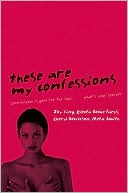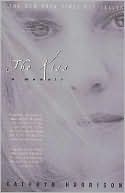Imaginative Sex
With 53 Detailed Scenarios for Sensual Fantasies and a Revolutionary New Guide to Male-Female Relations.\ In 1974, the author of the controversial and popular Gor novels revealed his vision for an exciting, fulfilling sex life for all. Imaginative Sex outlines John Norman's philosophy on relations between the sexes. In the first nine chapters, from "Imaginative Sex: The New Sexual Revolution", through "Love, Hunters and Evolution," "Marriage, Sex and Normality," "Sex and the Brain," "Marriage...
Search in google:
With 53 Detailed Scenarios for Sensual Fantasies and a Revolutionary New Guide to Male-Female Relations.In 1974, the author of the controversial and popular Gor novels revealed his vision for an exciting, fulfilling sex life for all. Imaginative Sex outlines John Norman's philosophy on relations between the sexes. In the first nine chapters, from "Imaginative Sex: The New Sexual Revolution", through "Love, Hunters and Evolution," "Marriage, Sex and Normality," "Sex and the Brain," "Marriage and the Ventilation of Emotions," "Privacy," "Disease," "Requirements for Imaginative Sex," and "Imaginative Techniques" Norman details and develops his theories and ideas about sex in the modern age and in the tenth chapter, "Sensuous Fantasies: Recoipes for Pleasure" he presents fifty-three scenarios designed to reintroduce fantasy and intimacy to the bedroom. Examples include The Aphrodisiac Fantasy; The Rites-of-Submission Fantasy; The Lady Fantasy; The I-Am-His-Slave-Girl Fantasy; The Safari Fantasy and The Blindfolded-Lovers Fantasy as well as many other sensuous suggestions, detailed for the enjoyment of all truly adult readers. Find out what really lies behind the philosophy of Gor, and the ways in which role playing can spice up any love life. The book ends with an Epilogue and a set oif Appendices that cover these important topics: Garments, Ties, Apparel in Fantasy, Notes on How to Buy a Slace Girl and Notes on Investments, Documents and Conception.
I. IMAGINATIVE SEX: The New Sexual Revolution\ The imagination has not yet been sexually liberated. Its liberation is the object of this book.\ There are large numbers of people, perhaps millions of them, who will not be able to understand this book. It will doubtless seem strange to them, peculiar, incomprehensible. These will be individuals who are defective in imagination. Whether this incapacity on their part is congenital or the result of an oppressive, crippling conditioning is arguable. These two explanations are not incompatible.\ We know that many human beings are defective in their grasp of spatial configurations, others lack sharp aptitudes in symbolic manipulation, others cannot, with a pencil, transfer an object in front of them to a sheet of paper; to some music is a mystery, save for the simplest of bangs and bumps. Some human beings have poor balance; others are color blind; some have slow reflexes; others seem incapable of understanding the plainest need signals of those about them, even perhaps their lovers. All of us, compared to what a human being might be, are multiply flawed with deficiencies. The capacity to use the imagination, one of the highest forms of intelligence, that of creative as opposed to dissective intelligence, is not an endowment bestowed in great quantity on human beings.\ In the unusual dimensions and worlds of the imagination most of us are foreigners, flatworms stupidly crawling among stars. On the other hand, in each human being there are, however small or undeveloped, imaginative capacities, as there are capacities for speech, for thought and love. There would seem to be no reason then why almost all human beings,qua human being, might not be able to come to a greater or a lesser understanding of what this book is about. Some would understand more; some less; but all would, to one extent or another, comprehend it. Yet we know this will not be the case. Many human beings, even those with normal or above-normal imaginative endowments, will fail to comprehend, at least emotionally, what this book is about. I suspect that in their case the explanation is cultural, not congenital. They, like most of us, have been the objects of a pervasive conditioning process, universal, subtle and pernicious, which restricts the inventiveness of the human mind, the applications of the imagination, to certain approved projects and modes of experience.\ It is, for example, acceptable to use the imagination, provided you do not use it too much, in the decoration of one's home; it is acceptable to use it, if not too wildly, in the naming of one's children; it is acceptable to use it in the writing of certain forms of approved fiction, etc. On the other hand, daring to apply this remarkable human capacity to sex is likely, at least initially, to jangle an entire warning system of negativities that has been, largely without our awareness, planted in our brains. Imagination should not be applied to sexual relationships, to improve and enhance them. It sounds quite stupid, because it is quite stupid, to say it that way, but that, in effect, is the message.\ The human brain, and its inventive power, may be appropriately applied to building bridges and designing guidance systems for missiles, but it may not be appropriately applied to the intimate sexual relations between man and woman. Indeed, at such a thought, the imagination of an otherwise bright, promising individual may tighten into a knot of fumbling, frozen thumbs. You don't use intelligence in that business. Intelligence, inventiveness, creativity, imagination is for bridges and guidance systems, not people.\ We have come a long way sexually in the last hundred years. Already we have discovered that a woman has a clitoris. There were many husbands a hundred years ago who were unaware of this. Already there is an open admission of the desirability of caressing a woman before penetrating her. One. even hears, in the more daringly avant circles, of fellatio-cunnilingus now recognized by even eminent psychiatrists, who have found out about it somewhere, as kind of nice. The fact that the very thought of this simple, pleasurable act still fills many people, men and women alike, with thrills of sexual horror, attractive and repulsive simultaneously, is an excellent indication that we are still in the bronze age of sex. It is probably still the case that most lovers, statistically, cannot bring themselves to practice fellatio-cunnilingus. Perhaps the bronze age is too advanced for us. Perhaps we are still wandering around looking at stones, wondering what they are for. At any rate, this book proposes a sexual revolution.








